Now recognised as Ireland’s finest photographer during the first half of the last century, Frank Browne perceived the medium that brought him posthumous fame primarily as a hobby. He spent the greater part of his life a member of the Jesuit order, and his work as a priest needs to be appreciated when considering his photographic legacy.
For Browne, photography was always an extra-curricular activity. One way or another, it had to be accommodated within the pre-ordained structure of religious life and this makes his achievement in the medium all the more impressive. In many respects, he merits comparison with Andrea Pozzo, a 17th-century Jesuit who was also a highly talented painter and architect. Pozzo could have enjoyed a successful secular career as an artist, but instead chose to devote himself to the Roman Catholic church and in particular to the Jesuit order for which he executed his greatest works, not least an astonishing illusory perspective ceiling in the church of Sant’Ignazio in Rome.
Browne, who spent some years studying in Italy, would surely have known of Pozzo and like the earlier artist, would have obeyed instructions from his superiors, rather than follow his own personal wishes. A priest first and a photographer second, nevertheless his vocation for both was equally strong. Making a choice from among the thousands of pictures he took of Co Wicklow therefore proves challenging; so many of them demonstrate how his eye invariably alighted on the visual equivalent of the mot juste.
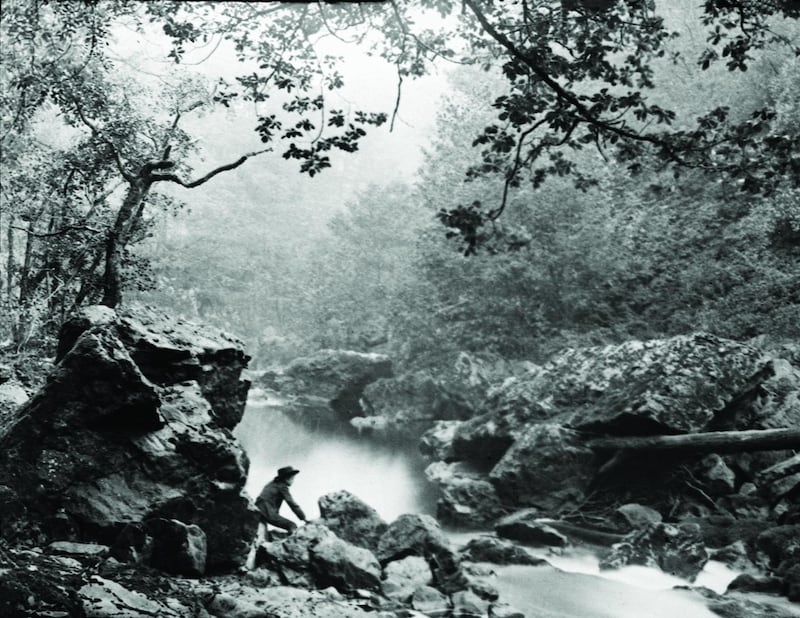
A particularly fine example of this ability, and an early work, is his view of the Dargle Glen photographed in 1910. This place has long appealed to artists, indeed there is an oil by Irish painter George Barret believed to date from the early 1760s and offering almost an identical image of the same spot. In both instances, the scene has been carefully framed by trees and a figure placed on the left-hand side in order to provide a sense of scale within the landscape of rocks, water and foliage. There’s no evidence that Browne ever saw Barret’s painting. More probably, like the artist he was attracted to the picturesque nature of the scene.
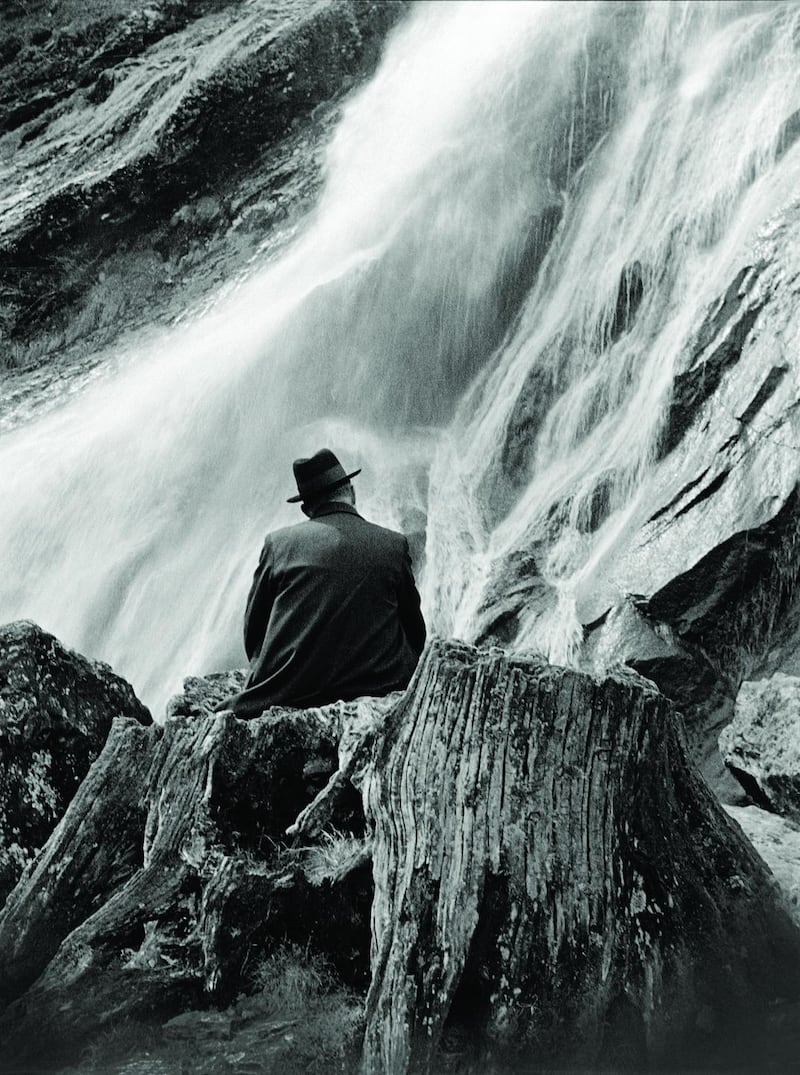
Certainly, the county’s stirring variety of landscape imposed its own authority on the photographer, as it has on all visual artists across the centuries. Some places exert an irresistible draw, not least Powerscourt Waterfall, the greatest example of this natural phenomenon in Ireland. Inevitably George Barret had painted here, along with many of his contemporaries and successors. Browne’s image is also highly painterly. Although he places a figure in the foreground of the scene, the individual has his back to the camera, apparently gazing into the depths of the foaming waters, the diagonal folds of his coat following the undulating line of the rocks over which water tumbles. Had this individual been facing the camera, the result would have been reduced to little more than another tourist snap, just a souvenir of a visit to a popular destination.
Instead, by situating the figure in isolation, Browne evokes memories of paintings by Casper David Friedrich. Many of the early 19th-century Romantic German artist’s most successful works, such as Wanderer above a Sea of Fog and Woman at a Window, similarly feature figures turned away from the viewer, who is thus encouraged to introduce a self-created narrative into the scene.
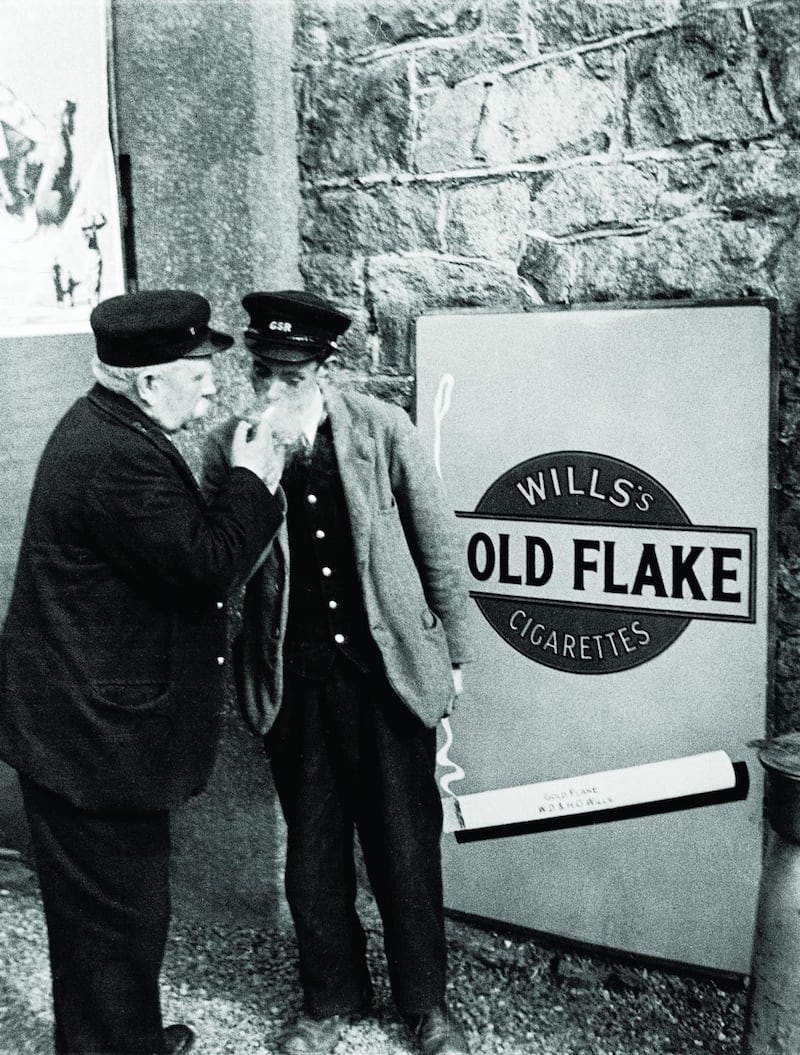
Thanks to his photographs of daily life, such as an image from 1933 of two railway workers lighting cigarettes beside an advertisement for the product on the platform of Wicklow station, Browne has often rightly been compared with humanist photographers Henri Cartier-Bresson and Robert Doisneau. But when it comes to his landscape work a more apt comparison would be with an earlier French photographer whose work is similarly infused with the spirit of romanticism, Eugène Atget. And in his palpable love of the natural world, he displays affinities with another Jesuit, the poet Gerard Manley Hopkins.
Yet while his landscape pictures unquestionably reveal him to be a Romantic, Browne had no qualms about celebrating the modern world. In 1940, when aged 60, he visited the site of a dam being constructed at Poulaphouca. After Ardnacrusha, this was the second big hydroelectric scheme undertaken by the new Irish State and involved damming the river Liffey to create what remains the country’s largest artificial reservoir. Browne’s photographs are a record of the construction work underway at the time and in his image of a man standing within the pipe, they provide a sense of the scale of the operation.
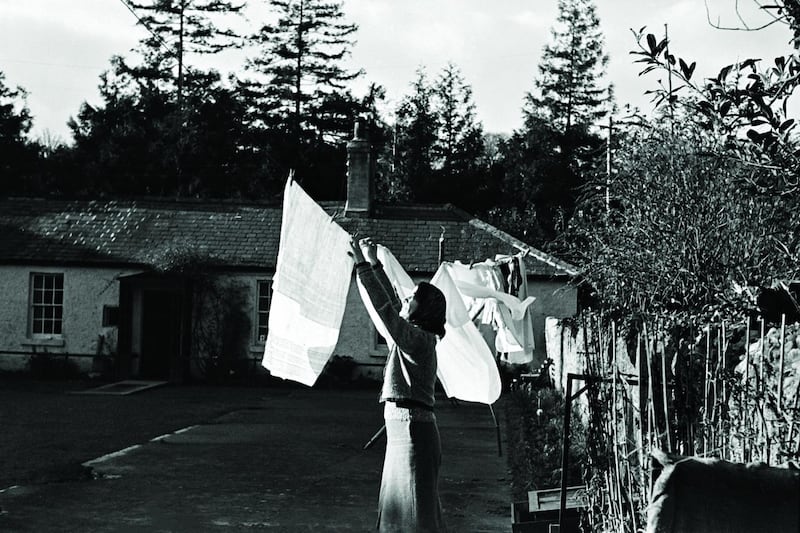
Enterprises of this kind were important in the newly-established Irish State, keen to encourage modernisation and the betterment of her citizens’ circumstances. However, even while this pioneering work was occurring, much of the country continued to operate at a slower pace, performing tasks little changed for centuries. Browne offers many examples of this, as ever employing light in a highly painterly fashion. A photograph of a woman hanging out washing at St Ciaran’s College, Bray was taken in 1942 but an identical scene could have been painted by a 17th-century Dutch genre artist such as Adriaen van Ostade: like those old masters, Browne was able to discover poetry in the humdrum.
The same skill was brought into play when it came to photographing buildings, where an understanding of architecture’s sculptural qualities makes his pictures more than just records. A view of a dormitory in the Mercy Convent, Arklow cleverly includes an open doorway in the left foreground, thereby indicating that we are being temporarily permitted to see into a world otherwise barred to us.
There were also occasions when Browne recorded properties unfamiliar to the majority of his fellow citizens, as when he visited some of Co Wicklow’s great private houses. His pictures of two of these are especially important, the first being Killruddery, ancestral home of the Brabazons, Earls of Meath. It is, of course, still owned by the family and a popular destination but many visitors may not realise that Killruddery was once substantially larger. Browne visited the house in 1947 and just a few years later a large part of the building, including its entrance front, was pulled down owing to an infestation of dry rot. His photographs are therefore an invaluable record of Killruddery prior to partial demolition.
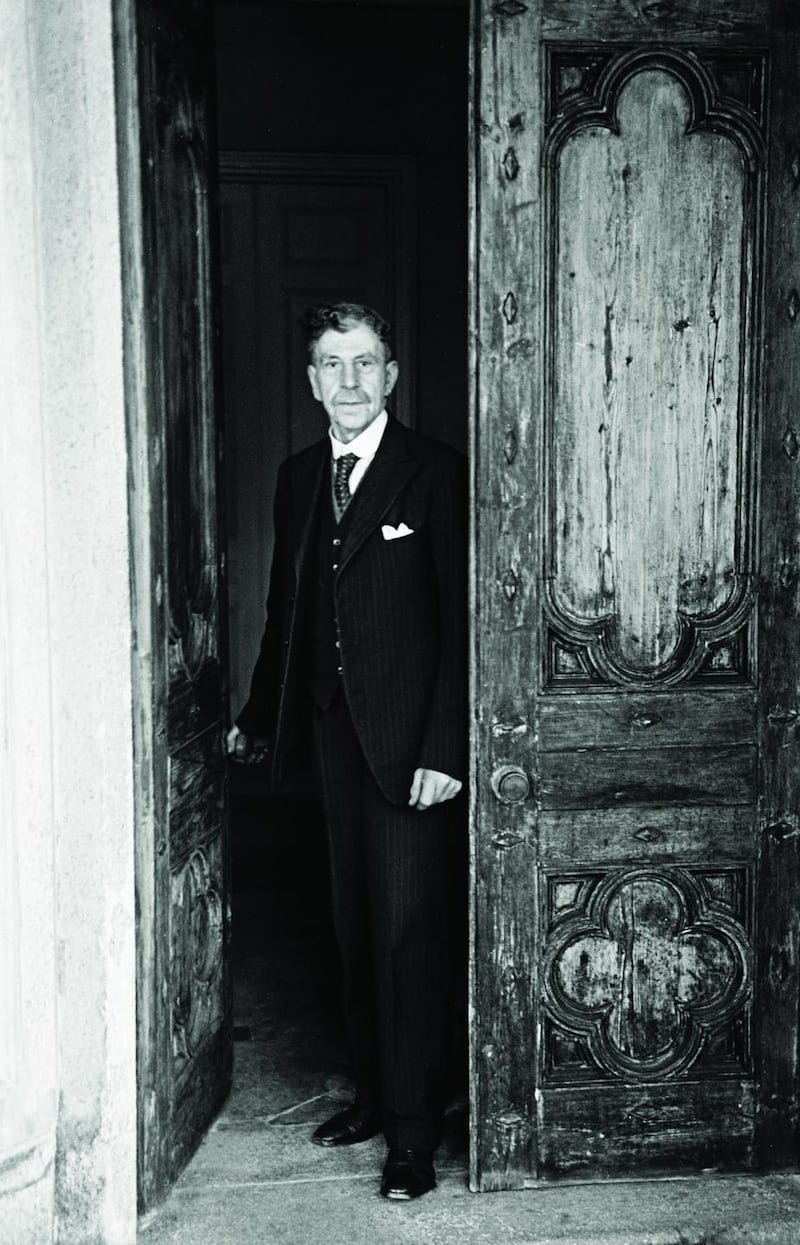
Even more important are the pictures he took at another house elsewhere in the county, Shelton Abbey. Today an open prison, it was for some 200 years home to the Howard family, Earls of Wicklow. When Browne visited in April 1947, the eighth earl was preparing to open the place to the public as a country house hotel; one wonders what Mr Virtue, Shelton Abbey’s old butler photographed at the front door, must have thought of this change of circumstances.
The building was then still filled with treasures accumulated by generations of the family, many of them captured in situ by Browne as he and his camera went from room to room. He was there in good time because the hotel venture was not a success and in 1950 Lord Wicklow was obliged to sell Shelton Abbey’s contents in a spectacular auction that lasted for 13 days. The great majority of lots went to overseas buyers and left Ireland, making Browne’s pictures priceless as a guide to how the house was originally furnished.
This is true of all the many photographs he took across several decades: they provide us with a guide to Wicklow’s appearance during the first half of the last century. Sometimes, as at Shelton Abbey, the pictures are a record of another era. But in other instances, they demonstrate the timeless character of both his art and the places he visited in this part of the country. Like Barrett and others before him, Browne’s artistry inspires us to look afresh at the familiar as we join him wandering through Wicklow.
Wandering Wicklow with Father Browne is published by Messenger Publications and priced at €19.95.
















